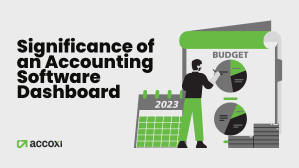

May 03, 2021

Electronic ledgers are a sort of electronic passbooks which is used for documenting GST-related transactions which are available in the GST portal to help the taxpayer to keep a tab on the GST payments.
There are mainly three types of E-ledgers available on the GST portal. These are
Electronic Cash Ledger is like an e-wallet and the GST payment made in liquid form via bank could be seen in Electronic Cash Ledger. Let us see how to use Electronic Cash Ledger in GST?
The amount at disposal in Electronic Cash Ledger could be used for paying tax, interest, penalty, fees, or any other payments. Literally, any tax liability could be met with the balance in the Electronic Cash Ledger.
A challan generated for the validity of 15 days through the GST PMT 06 form has to be used to make a payment. Payment could be made through these means: Internet banking ( authorized bank only), Nationally Electronic Fund Transfer (NEFT), real-time gross settlement (RTGS) (authorized or unauthorized bank). Over Counter payment could be used for the deposit of up to 10,000 rs per challan and per tax period.
Take, for instance, Mr. X has GST sales of 100,000 and ITC of 75000. Then his Electronic Cash Ledger is empty. So that he is supposed to pay his liability in the form of cash/ bank payment. If he deposits the liability of 25000, that would be shown in his Electronic Credit Ledger too. In addition, the balance of the ledger will be utilized for paying GST liability.
An electronic Credit Ledger is a ledger where Input Tax Credit (ITC) accessed claim could be credited in the ledger. The amount at disposal for Electronic Credit Ledger could be used only for tax purposes, and not for interest, penalty, or late fees.
Electronic Credit Ledger also includes ( all with reference to ITC)
A format and restrictions are there for paying GST liability by utilizing ITC (IGST, CGST, SGST)
Let’s make it clear through an example. Mr. Raju has an ITC of 70000. The division of ITC is
The IGST liability is 60000. The IGST credit of 36000 would be used for settling the liability. The balance liability, 34000, would be paid and reflected in the Electronic cash ledger. CGST credit of 14000 would be set off against the liability of 20000 and CGST of 7000 would be paid. The SGST amounts to the credit of SGST at disposal. It means Mr. Raju need not pay SGST.
This ledger contains taxpayer total GST liability and the mode he has opted to make payment. All about how to offset liability in GST is connected with the Electronic Liability Ledger.
Electronic Liability Ledger records the following details :
Liabilities could be followed in this order:
As per section 50 of the CGST act, interest would be imposed on delayed GST payment from the due date onwards. This is applicable both for delayed payment and incomplete payment too.
Interest payment should be voluntary in such cases and an interest rate, not exceeding 18% would be determined by the government on the recommendation of the GST council.
Interest shall be paid at a higher rate, not exceeding 24% in the case of undue or excess claim of ITC or undue excess reduction in the liability of output. It would be notified by the government.
It is to be borne in mind that whenever a taxpayer engages in an activity related to these electronic ledgers, the concerned ledger would get updated.




